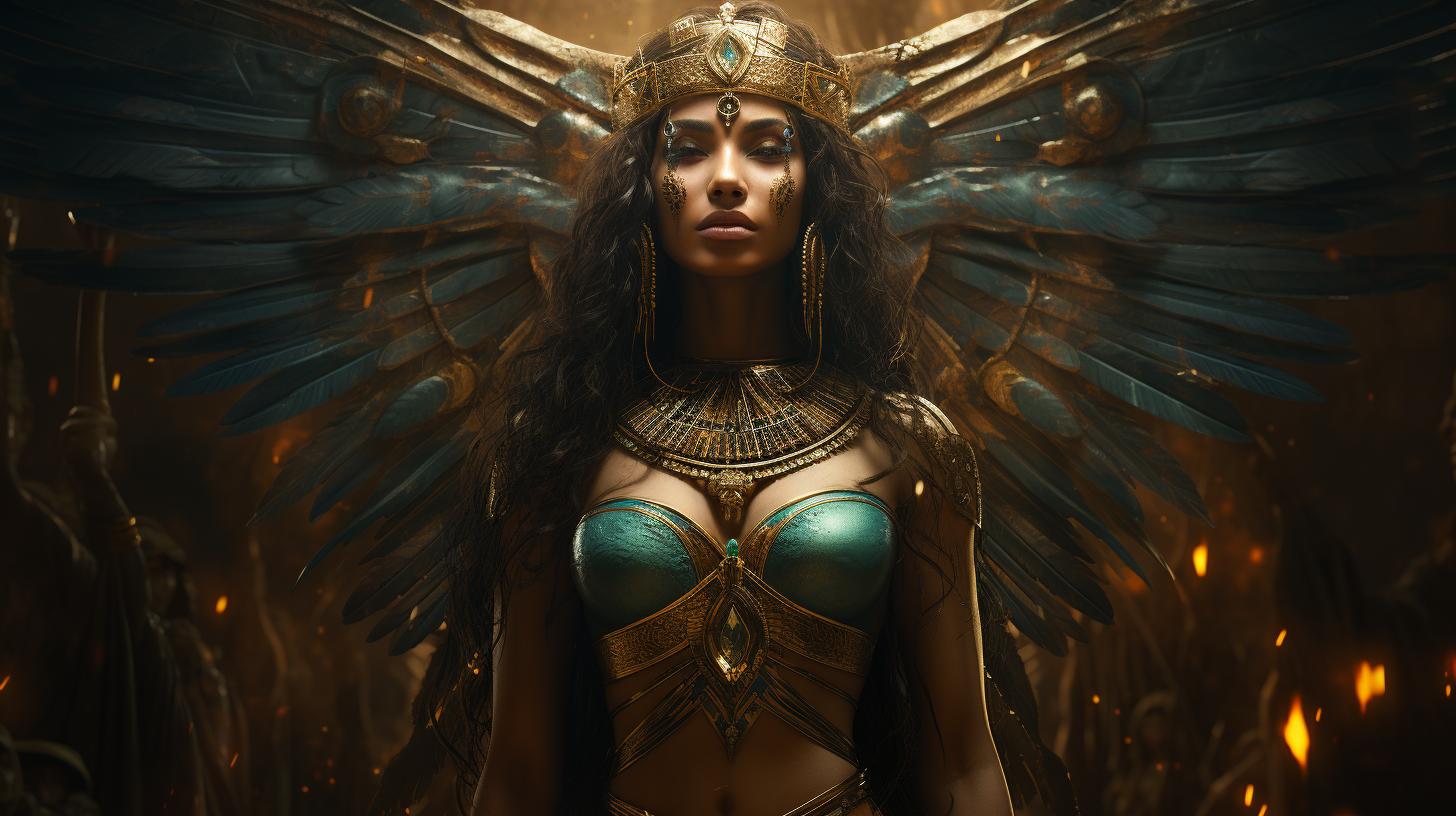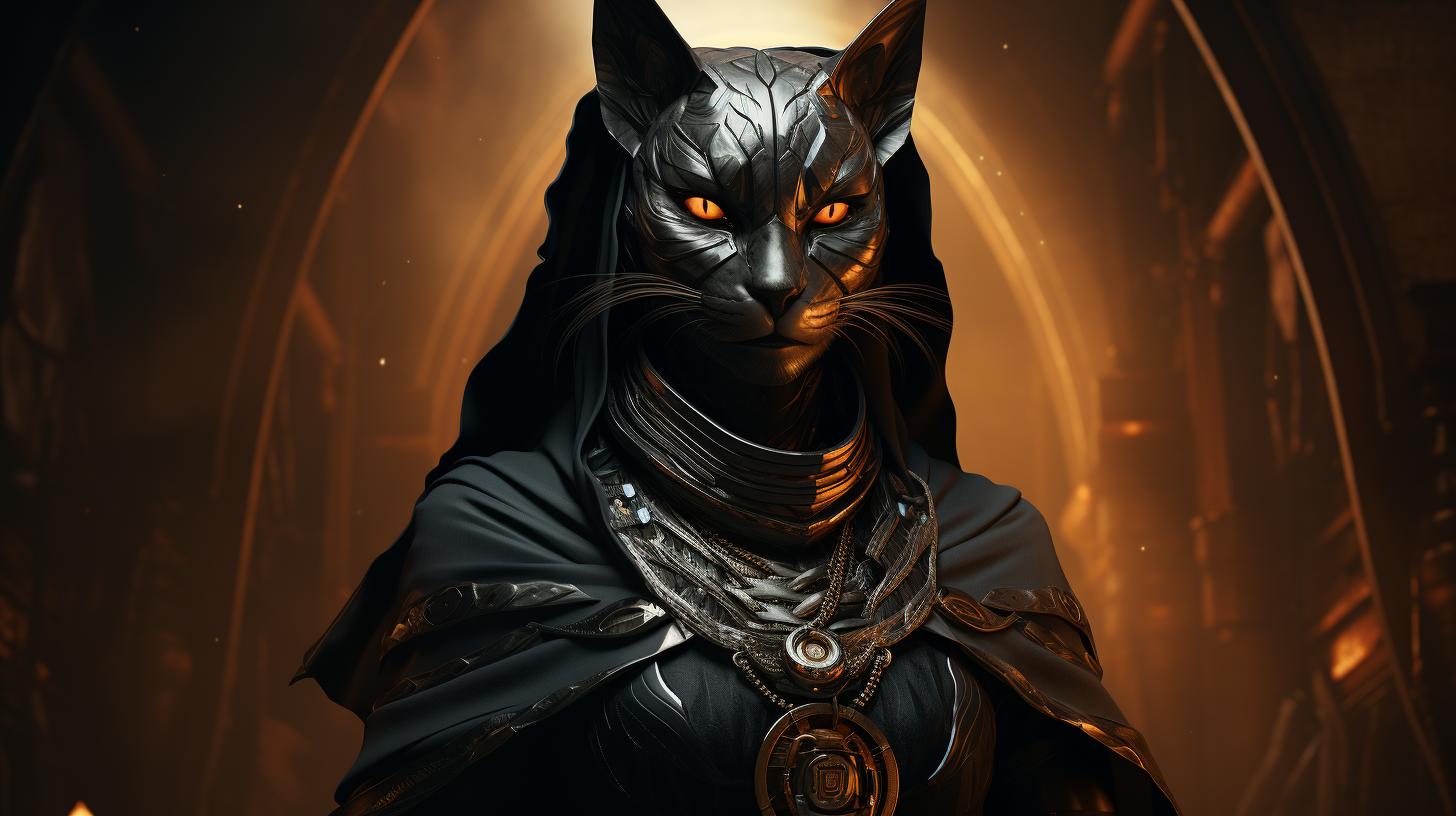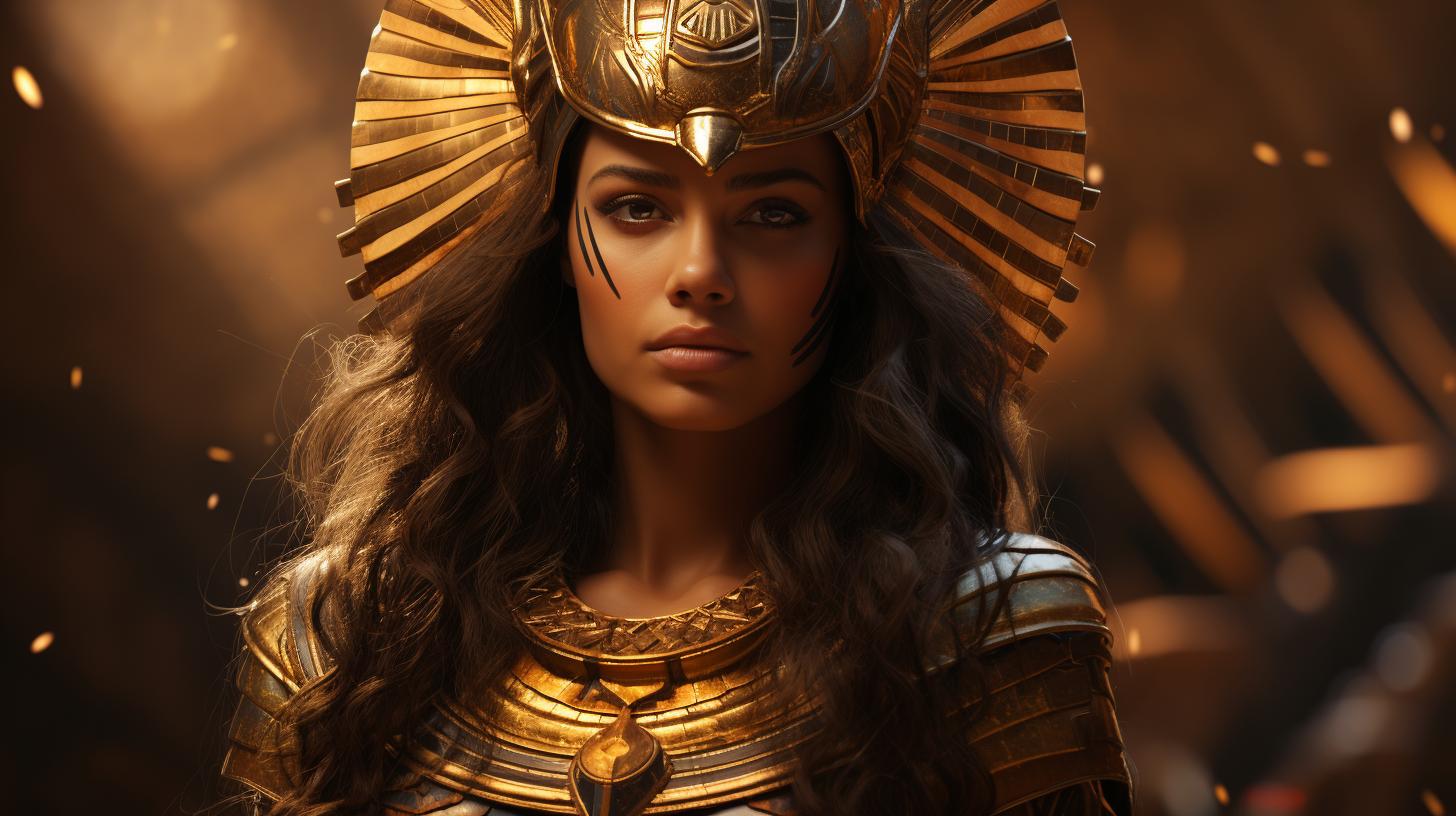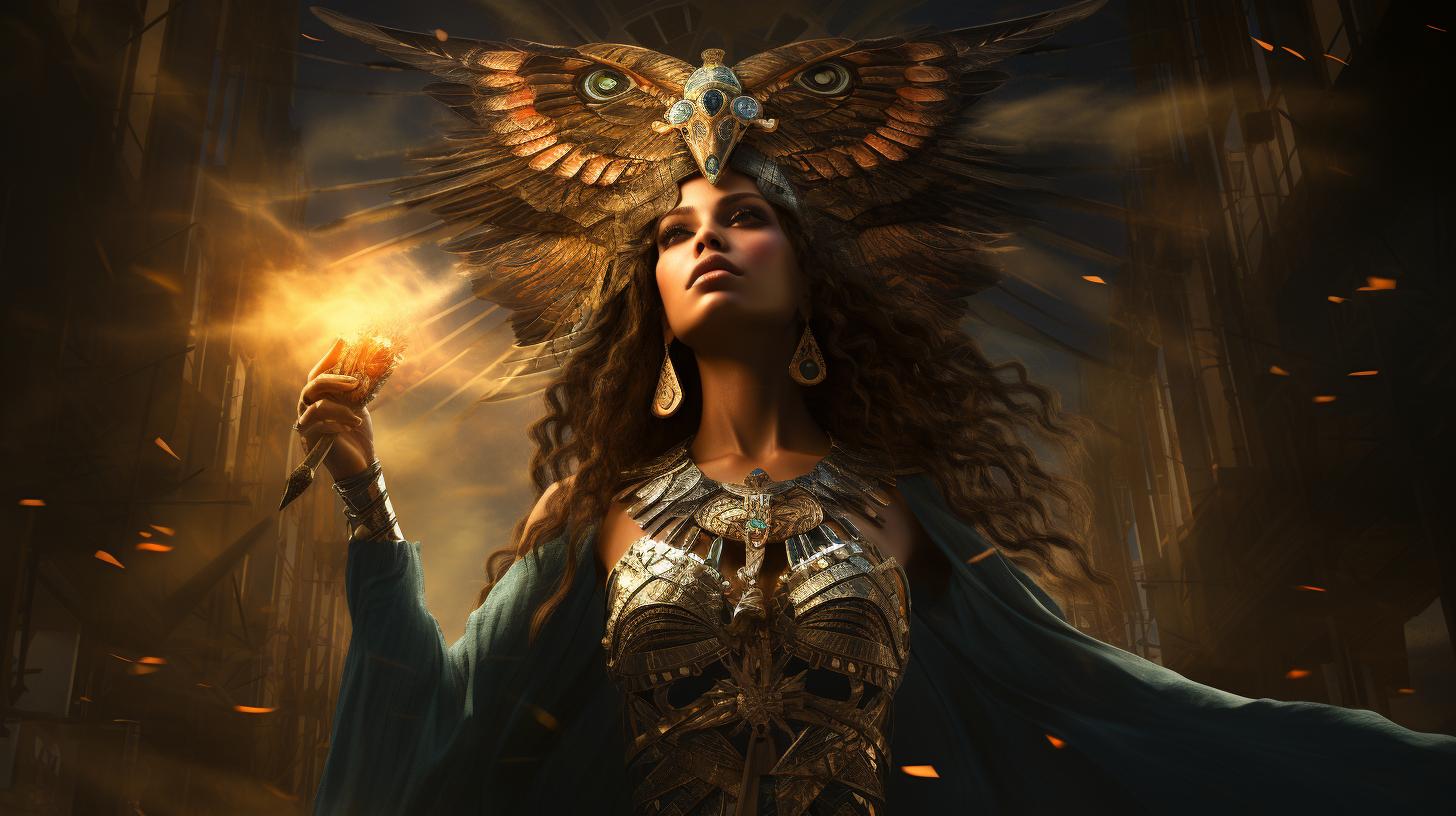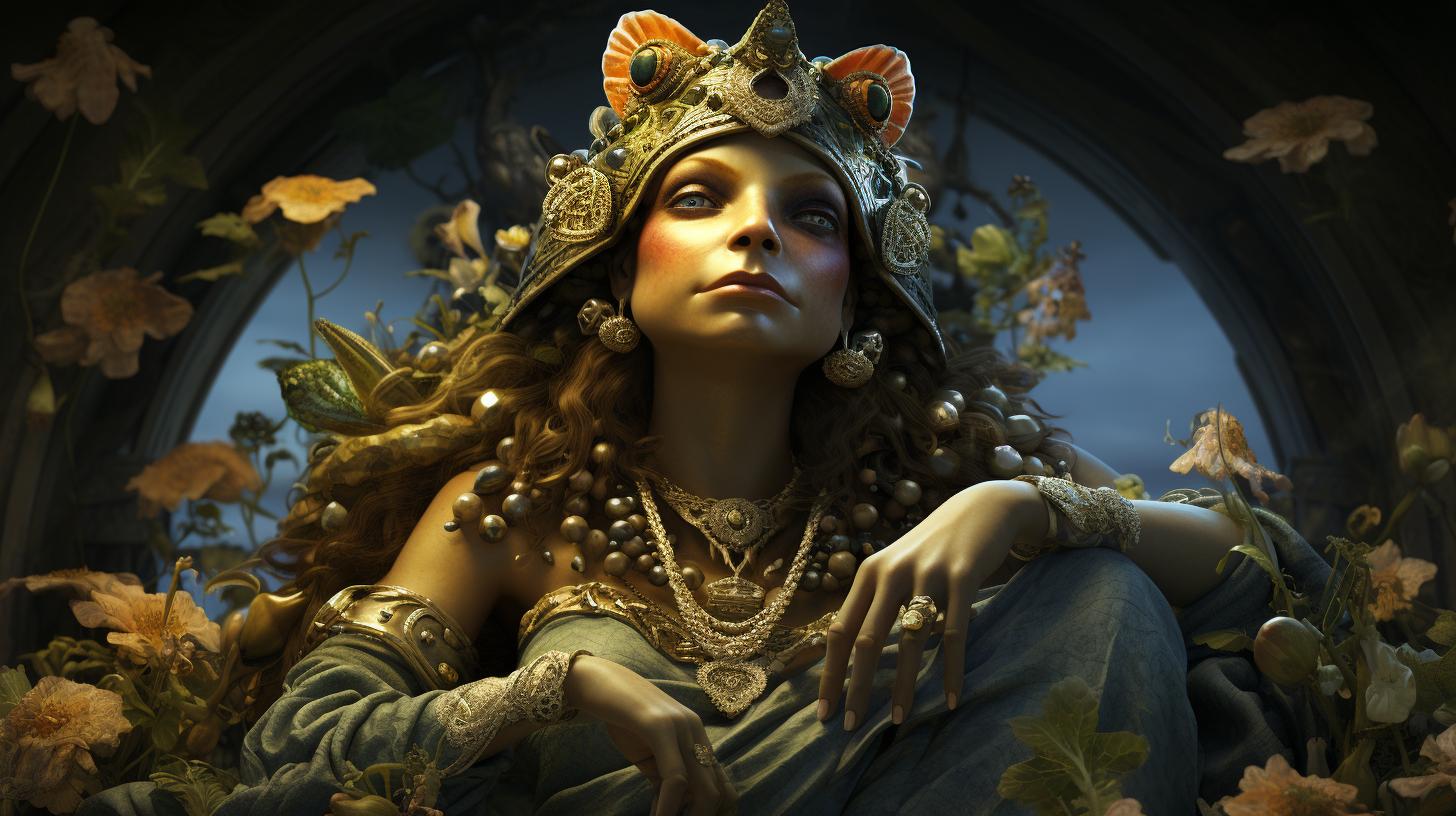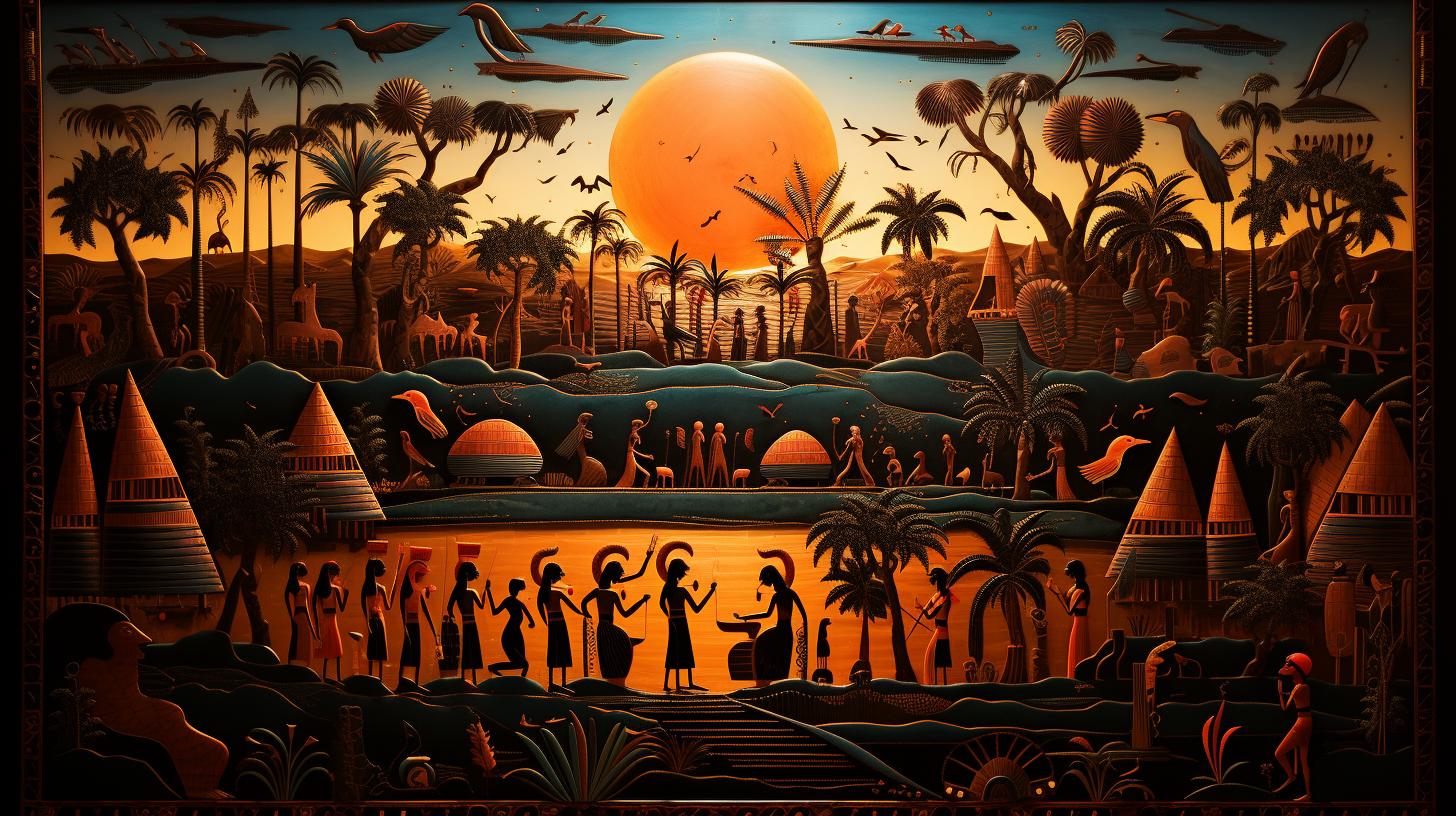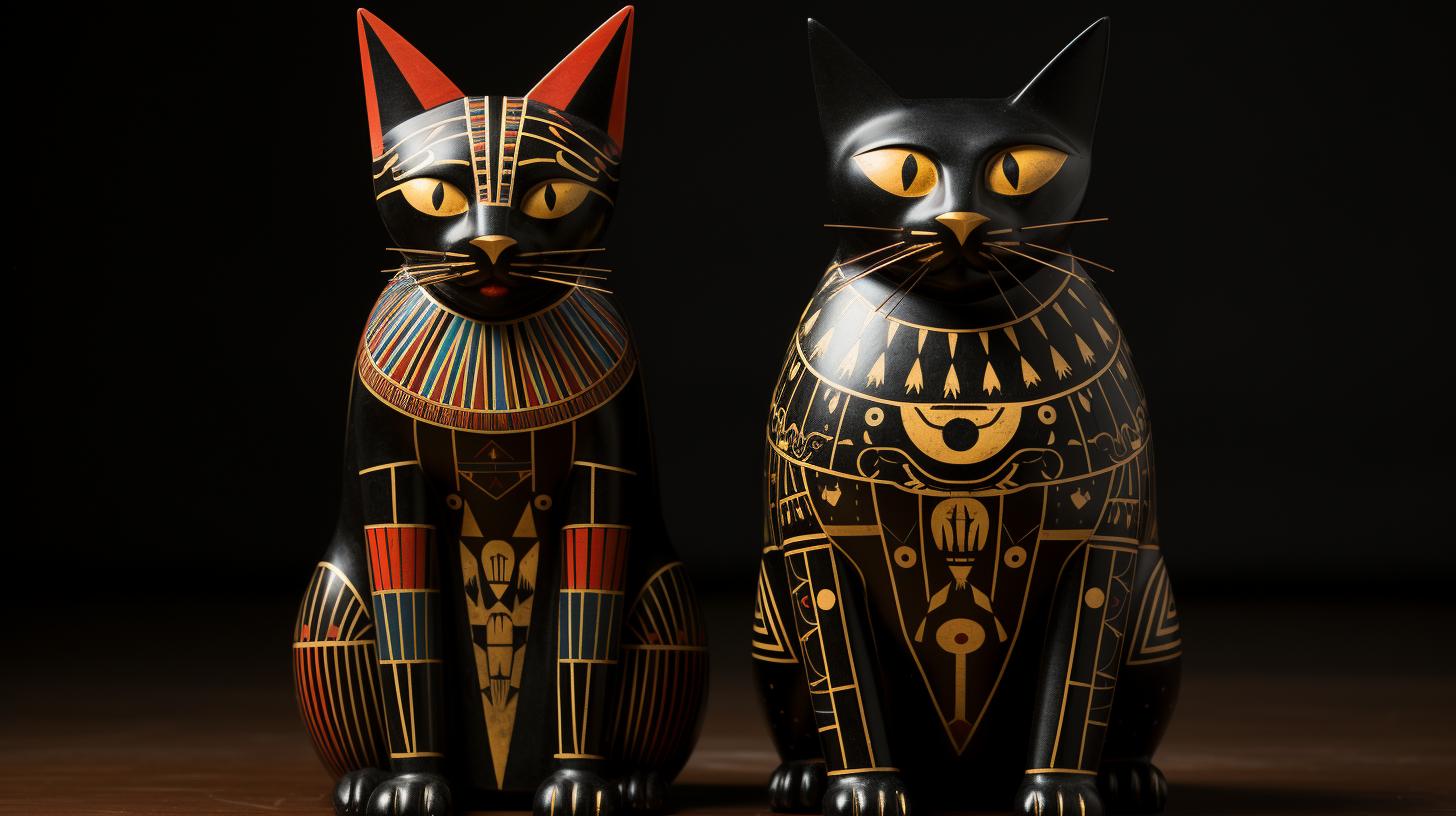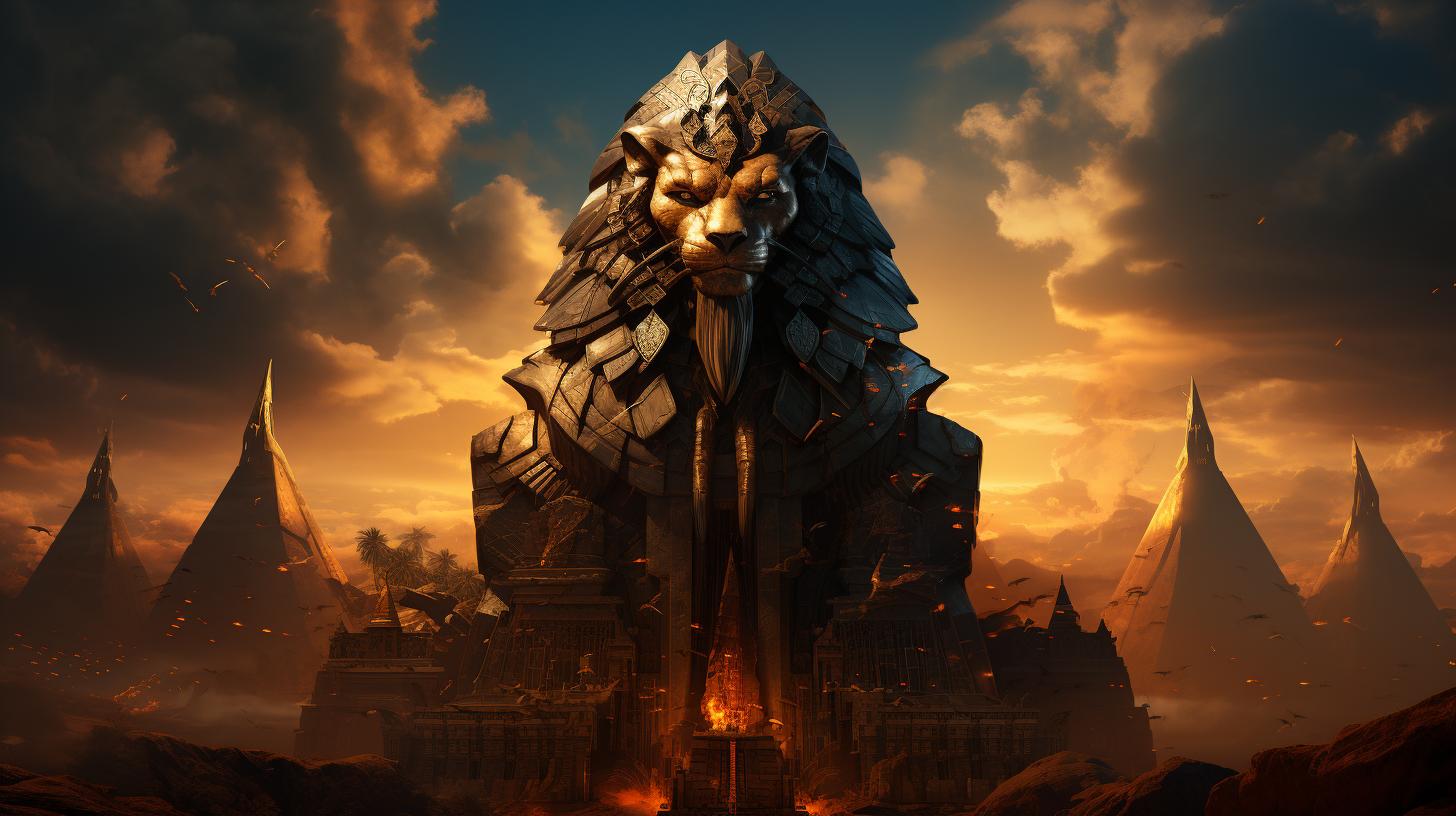Ancient Egyptian Goddess Nephthys of Death: The Enigmatic Queen of the Underworld
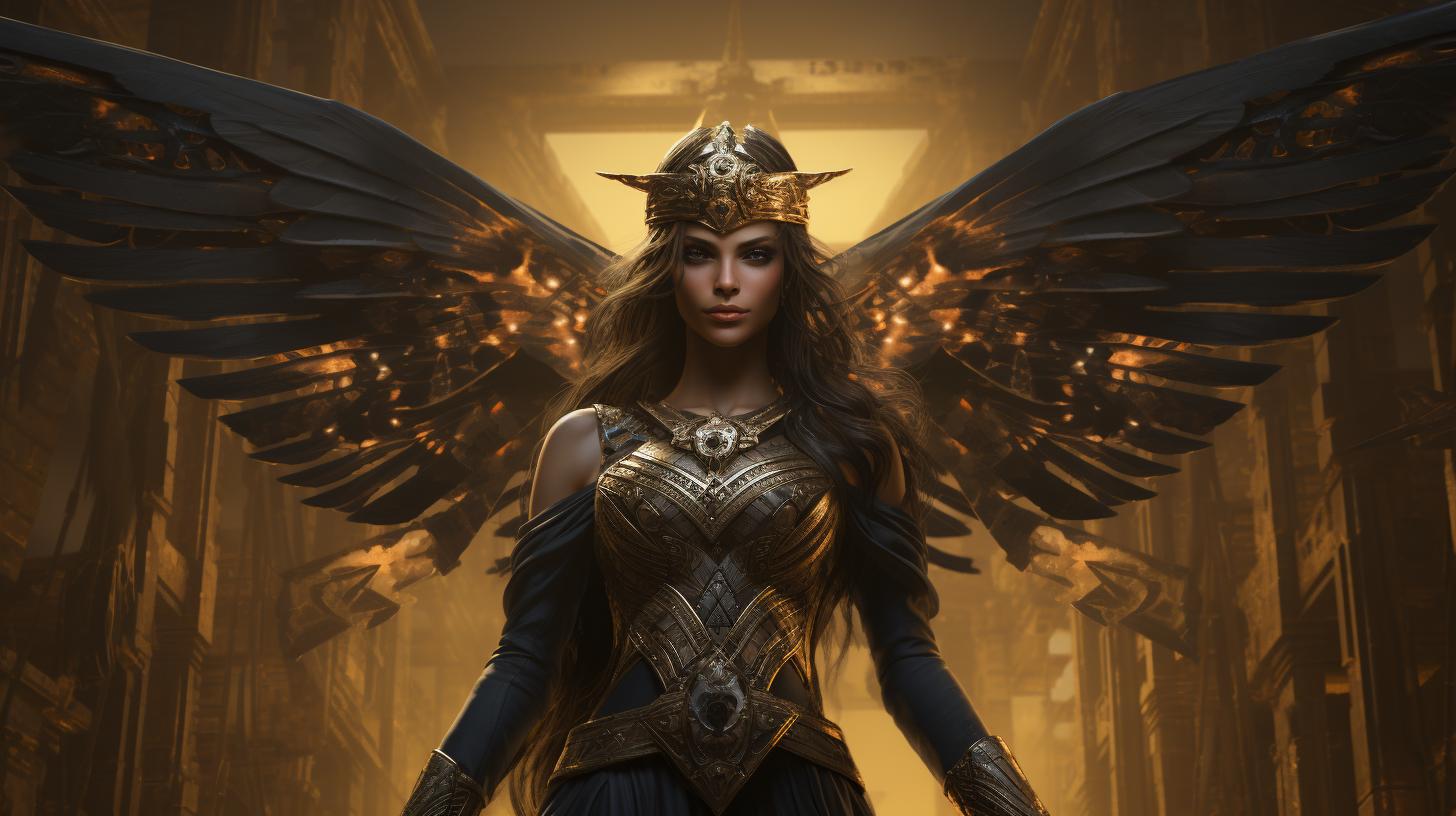
The ancient Egyptian goddess Nephthys of death played a significant role in Egyptian mythology. She was associated with funerary rituals, protection of the deceased, and the safeguarding of the god Osiris. As the sister of Isis and wife-sister of Set, her influence extended to various aspects of life and death, including mourning, temple service, childbirth, magic, embalming, and even beer.
Nephthys held a revered position among the deities of Heliopolis and was especially worshiped during the New Kingdom. Depicted as a protective bird or a winged woman, Nephthys symbolized the transition and guidance of souls in the afterlife.
The details about the ancient Egyptian goddess Nephthys of death, including her familial connections, roles in rituals, functions, and representations, contribute to a comprehensive understanding of her significance in Egyptian mythology.
The Ancient Egyptian Goddess Nephthys
The ancient Egyptian deity Nephthys holds a significant place in Egyptian mythology. She was revered as a powerful goddess associated with various aspects of life and death. Nephthys was the daughter of Nut and Geb, and part of the Great Ennead of Heliopolis.
Her role in funerary rituals alongside her sister Isis, and her protection of the god Osiris and the deceased, highlights her importance in ancient Egyptian belief systems.
Nephthys had a complex relationship with her husband-sibling Set, and her multifaceted functions encompassed mourning, temple service, childbirth, magic, embalming, and more.
Represented as a protective bird or a winged woman in Egyptian art, Nephthys symbolized transition and played a vital role in guiding souls through the afterlife.
Nephthys’s connections to divine figures such as Anubis and Horus further showcase her significance.
Worshiped during the New Kingdom, particularly by the Ramesside pharaohs, she held honored positions in temples, including Karnak and Luxor. Nephthys’s representations and associations reveal a deity who held both nurturing and fierce qualities, offering assistance and divine protection.
Recent research has shed new light on Nephthys’s relationship with Set, challenging previously held beliefs. Her esteemed position in the sacred city of Abydos and association with the Osireion sanctuary further emphasize her important role in Egyptian religious practices.
The Family of Nephthys: Daughter of Nut and Geb
Nephthys, the ancient Egyptian goddess associated with death, was born as the daughter of Nut, the sky goddess, and Geb, the earth god. As a member of the Great Ennead of Heliopolis, her lineage connected her to powerful divine forces.
Nephthys shared a close bond with her sister Isis, and together they played important roles in funerary rituals and the protection of the deceased.
While Nephthys was married to Set, the god of chaos and violence, recent research suggests that their relationship was not part of the Osiris myth of murder and resurrection.
Instead, Nephthys was aligned with a benevolent aspect of Set – the figure responsible for defeating Apophis. In this capacity, she aided Isis in collecting and mourning the dismembered parts of Osiris’ body, and acted as a guardian to the infant Horus.
Beyond her familial ties, Nephthys held multiple functions and associations within Egyptian mythology.
These included elements such as mourning, darkness, temple service, protection, childbirth, magic, embalming, and even beer. Her name, Nephthys, often translated as ‘Lady of the House’ or ‘Lady of the Temple,’ emphasizes her connection to specific temples and temple rituals.
Understanding Nephthys’ prominent role in Egyptian mythology and her dynamic family relationships sheds light on the complexities and significance of this ancient Egyptian goddess.
Nephthys and her Role in the Great Ennead of Heliopolis
Nephthys played an important role in the Great Ennead of Heliopolis, one of the primary religious systems in ancient Egypt.
As a member of this revered group, Nephthys belonged to a powerful divine family that included deities such as Atum, Ra, Shu, and Tefnut.
Within the Ennead, Nephthys served as a crucial counterpart to her sister, Isis. While Isis represented life and fertility, Nephthys embodied the concept of death and transition.
Their unique dynamic highlighted the duality of existence and the cyclical nature of the Egyptian cosmology.
As part of the Ennead, Nephthys played a significant role in maintaining cosmic balance and order.
She contributed to the divine harmony by standing alongside her husband, Set, who represented chaos and the forces that challenged the natural order. Together, they maintained equilibrium in the cosmic framework.
Nephthys’ association with the Great Ennead solidified her status as a revered goddess in ancient Egypt. Her presence in this esteemed group emphasized her importance in the religious and mythological narratives of the culture, showcasing her unique qualities and contributions to the Egyptian worldview.
Nephthys and Isis: Sisters in Funerary Rituals
In ancient Egyptian mythology, Nephthys and Isis were not only sisters but also important figures in funerary rituals. As members of the Great Ennead of Heliopolis, they played complementary roles in guiding and protecting the deceased.
Nephthys, known as the Lady of Lamentation, embodied mourning and darkness. Alongside her sister Isis, the Lady of the House, they provided comfort and support in the journey of the soul.
While Nephthys represented the essence of mourning, Isis symbolized the nurturing and regenerative aspects of life.
Together, they played crucial roles in the protection and resurrection of Osiris, the god of the underworld.
Nephthys assisted Isis in collecting and lamenting the dismembered body of Osiris, while Isis utilized her magical powers for the revival of Osiris.
Nephthys and Isis were also connected to the protection of the deceased during the embalming and mummification process.
They ensured the proper preservation and safe passage of the souls into the afterlife. Their joint efforts reflected the importance of female deities in the rituals surrounding death and rebirth in ancient Egyptian belief systems.
- Nephthys, the Lady of Lamentation
- Isis, the Lady of the House
- Guiding and protecting the deceased
- Assisting in the resurrection of Osiris
- Providing comfort and support to the souls
- Roles in embalming and mummification
Nephthys and Osiris: Protecting the God of the Underworld
Among the intricate relationships in Egyptian mythology, Nephthys played a vital role in protecting the god Osiris, the ruler of the underworld.
As the wife-sister of Set, Nephthys worked alongside her sister Isis to support and safeguard Osiris during his journey through the afterlife.
Nephthys’ presence in funerary rituals emphasized her role as a protector of the deceased.
Together with Isis, she mourned and collected the dismembered parts of Osiris’ body after his murder by Set. Through their combined efforts, they ensured his resurrection and ascension as the king of the afterlife.
While Nephthys’ connection to Osiris was primarily through her association with Isis, her role as a protective figure extended beyond him. Nephthys symbolized the transformative power of death and played a crucial role in guiding souls through the different levels of the afterlife.
Believed to possess magical abilities, she aided the deceased in their journey and offered divine assistance.
In artwork and iconography, Nephthys is often depicted alongside Isis, the central figure in the resurrection of Osiris. Through their collective efforts, the sisters ensured the continuity of life and the eternal reign of Osiris in the underworld.
Nephthys’ portrayal as a nurturing and protective figure further emphasized her role in safeguarding the god of the dead.
Through her involvement in the intricate mythological narratives of ancient Egypt, Nephthys cemented her place as a key player in the divine realm and an essential guardian of the underworld.
Nephthys and Set: The Complicated Relationship
The relationship between Nephthys and Set in ancient Egyptian mythology is a complex and intriguing one. While Nephthys is often associated with her sister Isis in funerary rituals and protecting the god Osiris, her connection with Set adds a layer of complexity to her character.
Set, the god of chaos and violence, is commonly portrayed as the antagonist in the story of Osiris’s murder and resurrection. However, recent research indicates that Nephthys’ marriage to Set was not part of this mythological narrative.
Instead, Nephthys was paired with a benevolent aspect of Set, the figure who defeated the chaos serpent Apophis.
In the role of the divine helper, Nephthys worked alongside Isis to gather and mourn the dismembered body parts of Osiris. She also acted as a caretaker and guardian of the infant Horus. This highlights her role in the restoration and rebirth of Osiris and the lineage of the pharaoh.
While Nephthys’ relationship with Set may seem contradictory given his destructive nature, it showcases her versatility as a deity. She embodies both nurturing and protective aspects, offering support and divine assistance in various contexts.
Further exploration of Nephthys and Set’s complicated relationship sheds light on the intricate dynamics within Egyptian mythology and underscores the multifaceted nature of the ancient Egyptian pantheon.
The Multifaceted Functions of Nephthys
In the ancient Egyptian pantheon, Nephthys, the goddess associated with death, possessed a diverse array of roles and associations, highlighting her significance in the mythology.
Mourning and Darkness: Nephthys as the Lady of Lamentation
Nephthys played a crucial role in mourning rituals, embodying the grieving process and symbolizing darkness and sorrow. As the Lady of Lamentation, she brought comfort and solace to those mourning the loss of a loved one.
Temple Service and Protection: Nephthys as the Lady of the House
Known as the Lady of the House, Nephthys had a strong connection to temple service. She took on the role of protecting the sacred spaces and ensuring their proper functioning. Her presence was revered in the temples, where she represented order and stability.
Childbirth and Magic: Nephthys as the Nurturer and Enchantress
Nephthys held a significant association with childbirth, nurturing new life into the world. Additionally, she possessed magical abilities, utilizing her enchantress persona to perform healing and protective spells.
Embalming and Beer: Nephthys in Death and Celebration
Another intriguing aspect of Nephthys’ multifaceted nature was her involvement in embalming rituals.
She played a role in ensuring a proper burial and preservation of the deceased. Furthermore, as the goddess associated with beer, she was celebrated in festive gatherings and rituals.
Nephthys in the Texts of the Pyramid: A Goddess of the Heliopolitan Ennead
Nephthys, the ancient Egyptian goddess associated with death, played a significant role in the religious texts inscribed on the pyramids.
Within the Heliopolitan Ennead, she was revered as a divine figure, representing the transition and guidance of souls in the afterlife.
The texts highlight Nephthys’ connection to the Ennead, the group of nine deities worshipped in Heliopolis.
Her role as one of the primary goddesses in this pantheon emphasizes her importance in the cosmology of ancient Egypt.
Depicted as both a mournful figure and a protector, Nephthys’ presence in the pyramid texts showcases her multifaceted nature.
She was invoked to offer solace and assistance to the deceased, ensuring their safe journey in the realm of the dead.
Furthermore, Nephthys’ association with Osiris within the Ennead adds another layer of symbolism to her role.
The texts depict her involvement in the resurrection and protection of Osiris, emphasizing her significance in the grand narrative of life, death, and rebirth.
Through her prominence in the texts of the pyramids, Nephthys emerges as a key deity in ancient Egyptian funerary practices.
Her divine presence provided guidance, protection, and comfort to the souls transitioning into the afterlife, solidifying her status as an essential figure in the ancient Egyptian pantheon.
The Divine Assistance of Nephthys: The Helper and Excellent Goddess
In Egyptian mythology, Nephthys played a vital role as a divine assistant, providing help and protection to both gods and mortals.
She was known as the “Helper” and the “Excellent Goddess”, embodying divine assistance in various aspects of life.
Nephthys aided her sister Isis in gathering and mourning the dismembered body of Osiris, thus contributing to his resurrection and ensuring the continuation of the royal lineage through their son, Horus.
As a nurturing figure, Nephthys acted as a guardian of the infant Horus, assisting in his upbringing and protection.
She was considered a primary foster mother of the pharaonic deity, symbolizing her role in nurturing and safeguarding.
Additionally, Nephthys possessed formidable powers of assistance and protection in the afterlife. Her magical spells and rituals were believed to guide the deceased through the various levels of the afterlife, ensuring a successful transition.
Furthermore, Nephthys held a position of honor in the sacred city of Abydos, closely associated with the sanctuary of Osireion. Her presence and divine assistance were paramount in the rituals and ceremonies conducted in reverence to Osiris.
Overall, Nephthys’ divine assistance encompassed her roles as a helper and nurturer, providing guidance, protection, and support in both life and the afterlife.
Nephthys as the Mother of Anubis: Mythological Perspectives
In Egyptian mythology, Nephthys is often portrayed as the mother of the god of embalming and the afterlife, Anubis. While some myths suggest that Anubis is the son of Bastet or Isis, others point to Nephthys as his mother.
The exact nature of their relationship is subject to interpretation and varies in different mythological accounts. Nevertheless, Nephthys’ role as a mother figure to Anubis holds significant meaning within the Egyptian pantheon.
As the goddess associated with death and protection, Nephthys’ connection to Anubis amplifies her role in guiding and safeguarding souls in the afterlife. Her nurturing aspect manifests in her care for Anubis, a testament to her maternal nature.
By exploring the diverse perspectives surrounding Nephthys’ motherhood of Anubis, we gain insight into the intricate web of Egyptian mythology and the multifaceted significance of Nephthys herself.
Nephthys as the Maternal Figure of Horus: Nurturer and Protector
Nephthys played a crucial role as the maternal figure of Horus, the renowned Egyptian deity.
As the principal mother nodriza of the pharaoh god, she provided nourishment and protection to the infant Horus, ensuring his growth and well-being. This role highlights Nephthys’ nurturing qualities and her importance in shaping the future of the divine lineage.
In Egyptian mythology, Nephthys acted as a caretaker for Horus, assisting in his upbringing alongside Isis. Her presence was essential in gathering and mourning the dismembered body parts of Osiris, Horus’ father, reaffirming her position as a protective figure within the family.
By tending to Horus, Nephthys ensured the continuity of the divine lineage and the preservation of their legacy.
As the nurturing and protective maternal figure, Nephthys offered divine assistance and guidance to Horus throughout his journey.
She shielded him from harm and provided him with the support needed to fulfill his destiny as the protector of Egypt. Nephthys’ role as a guardian highlights the significance of her presence in Egyptian mythology and the recognition she received as a divine force in the lives of the gods and mortals alike.
Nephthys as the Fierce Divinity and Incinerator of Enemies
In Egyptian mythology, Nephthys is not only associated with protection and nurturing but also possesses a fierce and dangerous aspect. She is depicted as a divinity capable of incinerating the enemies of the pharaoh with her fiery breath.
This portrayal symbolizes her power and authority, particularly in the realm of death.
As the sister of Isis and the wife-sister of Set, Nephthys plays a crucial role in the mythological narrative of Osiris’s murder and resurrection.
She aids Isis in collecting and mourning the dismembered body parts of Osiris and acts as a guardian to his son, Horus. Nephthys’ dual nature reflects her ability to bring destruction to those who oppose divine order while also supporting and protecting the rightful rulers.
Depicted in her fearsome form, Nephthys is often illustrated with her mouth agape, ready to unleash her fiery breath upon the adversaries of the pharaoh. Her role as the incinerator of enemies highlights her association with justice and the safeguarding of the divine order.
In ancient Egyptian rituals and cosmology, Nephthys’ formidable power and ability to incinerate enemies provided a sense of protection and security to the pharaoh and the deceased. Her presence assured the defeat of any forces working against the divine order and aided in the safe passage of the deceased into the afterlife.
Nephthys and the Ramesside Pharaohs: Veneration in the New Kingdom
In the era of the New Kingdom in ancient Egypt, the goddess Nephthys gained significant veneration from the pharaohs of the Ramesside dynasty. Her revered status was evident through the presence of altars dedicated to her in the grand temple complexes of Karnak and Luxor.
As a member of the Ennead, the nine gods worshipped in Heliopolis, Nephthys held a prominent position in Egyptian religious beliefs.
Nephthys played an essential role alongside her sister, Isis, in funerary rituals.
Together, they safeguarded the remains of the deceased and provided protection to Osiris, the god of the underworld. This close association with death, magic, and protection made Nephthys a crucial figure in the realm of the afterlife.
As the New Kingdom pharaohs sought to solidify their divine connections and ensure a prosperous afterlife, they honored Nephthys with great reverence. They recognized her as a powerful and benevolent deity who could assist them in navigating the complexities of the realms beyond.
Nephthys’ presence within the temples of Karnak and Luxor emphasized her role as a protector of the deceased and an integral part of the rituals surrounding death. The Ramesside pharaohs validated her importance through their devotion and inclusion of Nephthys in the Ennead, further solidifying her place in Egyptian religious traditions.
Overall, Nephthys held significant veneration during the New Kingdom, particularly among the pharaohs of the Ramesside dynasty. Her connection to death, protection, and the afterlife made her a vital figure in the religious beliefs and practices of ancient Egypt.
Nephthys in the Temples of Karnak and Luxor: Altars of Devotion
In the ancient Egyptian temples of Karnak and Luxor, Nephthys held a significant presence as a revered goddess. Her altars were prominent within these sacred complexes, symbolizing her role as a protector and guide in the afterlife.
Devotees would gather at these altars to pay homage and seek her divine assistance in their spiritual journeys.
At Karnak, Nephthys’ altar stood as a testament to her association with death and transition.
Here, followers would offer prayers and make offerings, entreating her aid for a smooth passage into the realm of the deceased. The solemn atmosphere of the temple enhanced the sense of reverence for Nephthys and her powerful influence over the afterlife.
Similarly, at Luxor Temple, Nephthys’ altars commanded reverence and devotion. Worshipers would come to express their piety and seek her intercession, recognizing her as a formidable force in the spiritual realm.
Her altars provided a sacred space for reflection, purification, and communion with the divine.
The altars of Karnak and Luxor Temple served as focal points for the worship and adoration of Nephthys.
As devotees gathered in these hallowed spaces, they acknowledged her as a vital deity in the journey towards the afterlife, cherishing her divine protection and guidance.
Depicting Nephthys: Symbolism and Representations
Throughout ancient Egyptian art and iconography, Nephthys was depicted in various forms, each carrying symbolic meaning.
These depictions shed light on the significance and role of this goddess in Egyptian mythology and religious beliefs.
Nephthys as a Protective Bird: The Avian Symbolism
One of the common representations of Nephthys is as a protective bird, often depicted as a hawk or a vulture. This avian symbolism emphasizes her role as a guardian and protector, watching over the deceased and guiding them in the afterlife.
It symbolizes her ability to soar above earthly realms and connect with the divine.
Nephthys as a Winged Woman: The Divine Feminine Iconography
In other representations, Nephthys is depicted as a winged woman, symbolizing her divine nature and connection to the spiritual realm. With her wings outstretched, she represents the transformative power of the feminine and the ability to transcend physical limitations.
This portrayal highlights her role as a nurturing and guiding force in the journey of the deceased.
In Egyptian art, these depictions of Nephthys served as reminders of her protective and nurturing presence in the realm of death.
The symbolism associated with her avian form and winged representation conveyed her divine attributes and the profound impact she had on the beliefs and rituals surrounding death and the afterlife.
Nephthys: Guiding the Dead in the Afterlife
Nephthys, the ancient Egyptian goddess, played a pivotal role in guiding the deceased towards the afterlife.
As a member of the Ennead of Heliopolis, she possessed the knowledge and power to navigate the intricate realms of the underworld. Nephthys was regarded as a crucial force in the transition from earthly existence to the afterlife.
With her divine assistance, souls would embark on a journey through various levels of existence, encountering challenges and tests along the way. Nephthys, often depicted as a protective bird or a winged woman, ensured that the dead would find their rightful place in the divine realms.
- She utilized her magical abilities to guide and safeguard the spirits, warding off any malevolent forces that sought to disrupt their journey.
- As the Lady of Lamentation, she provided solace and comfort to the grieving, offering support during the mourning process.
- In her role as the Lady of the House, Nephthys maintained the sanctity of the temples and ensured that proper rituals were conducted to honor the departed.
- Additionally, Nephthys embodied the nurturing aspect as the goddess of childbirth, accompanying souls in their rebirth and renewal.
Through her multifaceted presence, Nephthys guided and protected the souls in their transformation from mortal beings to immortal entities.
Her intercession ensured a smooth transition, allowing the deceased to fulfill their ultimate destinies in the afterlife.
Recent Research: Reevaluating Nephthys’ Relationship with Set
Recent research has shed new light on the relationship between Nephthys and Set, challenging previous beliefs regarding their union. Scholars have reevaluated the understanding that Nephthys was married to Set as part of the myth of Osiris’ murder and resurrection.
Instead, it is now suggested that Nephthys was paired with Set’s benevolent aspect, the figure responsible for vanquishing Apophis.
This alternative perspective reveals Nephthys’ crucial role in assisting Isis in gathering and mourning the dismembered body parts of Osiris. As the nurturing and protective figure, she also acted as a caregiver for the infant Horus. Nephthys held an esteemed position in the sacred city of Abydos and was associated with the sanctuary of Osireion.
By reevaluating Nephthys’ relationship with Set, researchers have deepened our understanding of the complex dynamics within Egyptian mythology. This new perspective illuminates the significance of Nephthys as a maternal and supporting force, working alongside other deities to ensure the preservation and resurrection of Osiris. Further exploration of this topic promises to deepen our understanding of Egyptian mythology and the roles of its divine figures.
Nephthys’ Honorable Position: Abydos and the Osireion Sanctuary
In ancient Egypt, Nephthys held an esteemed position in the sacred city of Abydos and the revered Osireion sanctuary. Abydos was a significant religious center, dedicated to Osiris, the god of the afterlife and rebirth.
Nephthys’ association with Osiris and her role as the protector of the deceased solidified her place in these revered sites.
Within the sacred grounds of Abydos, Nephthys was venerated for her nurturing and protective nature, epitomizing the guiding force in the journey of souls towards the afterlife.
Her presence in the Osireion sanctuary emphasized her role in assisting in the resurrection and rejuvenation of Osiris.
The Osireion, a unique structure within Abydos, served as a symbolic tomb for Osiris and a place of pilgrimage.
Nephthys’ connection to this sanctuary accentuated her importance in the divine rituals and rites carried out in honor of Osiris.
As a crucial member of the Egyptian pantheon and a prominent figure linked with death and rebirth, Nephthys’ honored role in Abydos and the Osireion sanctuary underlined her significance in the ancient Egyptian religious landscape.
.











